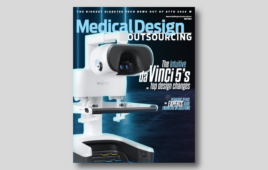Adding connectivity to products is a major trend in the medical device industry. But medtech companies taking the leap need to ensure that both the product and the company’s ability to deliver and support that product are in alignment.
Tim Gee, Medical Connectivity Consulting

(Photo by freestocks.org on Unsplash)
A manufacturer who wants to add connectivity to an embedded medical device must make some obvious technology changes, such as networking, wireless radios and often, application software and systems integration with EMRs and other systems.
The less obvious impact is on company operations, or the business delivery system. This includes all of the resources, services, policies and procedures used to design and manufacture product, generate sales, and install, service and support the company’s systems. Companies planning a connectivity product development project should make sure that both the product and the company’s ability to deliver and support that product are in alignment.
Here’s a quick description of the most common areas of a company affected by connectivity features.
1. Finance
Most companies have a model to evaluate the financial potential of new product development efforts. The factory margin in a conventional embedded system design is often 80%. This is a realistic objective when the company manufactures the entire product. Many connectivity features require that manufacturers resell off-the-shelf computing equipment to offer the whole product solution demanded by most customers. The margins on this equipment are almost nonexistent, and can hurt a project’s factory margin. For this and a few other reasons, a somewhat different set of financial metrics is needed for connectivity related projects.
2. Engineering
Many manufacturers rarely develop new products. Their engineers focus on the company’s core technology, such as beamforming and image processing for a diagnostic ultrasound manufacturer. Connectivity features require expertise in different areas: TCP/IP networking, IT and medical data communications standards, application software development and systems integration, to name a few. And like expertise in beamformers, this expertise in connectivity related technology and processes is not something you just “pick up” while doing a project. The manufacturer must identify the skills required for its connectivity design project, identify the gaps and plans to fill them.
3. Regulatory affairs
In some ways, the embedded system device is a black box that is tightly controlled by the manufacturer. Companies tend to devise the most efficient regulatory strategy to ensure FDA compliance, but applying that same regulatory strategy to a device with connectivity features often results in higher sustaining engineering costs. The main culprit here is the off-the-shelf IT equipment that is part of any connectivity feature. These are products that are out of the control of the manufacturer and can change every 12 to 18 months. Device manufacturers need a regulatory strategy that can accommodate that change while minimizing required verification and validation testing – in other words, a different regulatory strategy.
4. Marketing
The value proposition of an embedded system device is often concentrated on the inherent capabilities of the device itself. To continue with the ultrasound example, the focus is image quality for specific diagnostic applications. When connectivity features are introduced, the value proposition expands to include workflow automation that connectivity enables. Workflow automation’s value propositions are different from and more varied than those for image quality. Buyers of new connectivity solutions may also be inexperienced in purchasing this kind of capability and will require education during the sales process – another new marketing requirement.
5. Sales
Connectivity expands the sales process from selling the box, i.e., the distinguishing characteristic of the core function of the embedded system device, to include workflow automation that the connectivity features enable. This transforms the selling process into one that is consultative, rather than focused on core functions like image quality. Connected features also introduce new decision makers, the buyer’s IT department. IT will have concerns and questions that must be addressed, as will the questions from clinical buyers. The sales department will need a different selling process, sales tools and training to meet these new challenges.
6. Installation, service and support
Most embedded system devices are simply connected to a power source and the patient. The installation process is often little more than removing the device from shipping packaging and attaching a few accessories. Service and support focus on the internal operation of the embedded system device and can rely on engineering for complex problems or potential latent defects. Connected devices must be integrated with the customer’s enterprise network; application software must be installed on customer computers and/or computers sold by the manufacturer; and systems integration must be completed to ensure that data between the embedded system device and other customer systems such as the EMR, PACS or other systems.
Routine installations tend not to require a lot of additional training or skills. But the inevitable problematic installations will require technician- or engineer-level skills. Best practice for service and support for connectivity features is to use remote access to diagnose and often fix customer problems. Establishing remote access and having those resources for connectivity service and support requires enterprise IT acumen in addition to product knowledge.
Depending on the nature of your connectivity features, the impacts described here may over- or understate your needs. Regardless of the specifics, it is clear that there are operational impacts that come with connectivity features. The ability to support those connectivity features will have a big impact on product quality and customer satisfaction. The keys to good execution are a needs assessment and gap analysis. This will drive an operational plan that must be synced up with product development and the availability of the new product.
Tim Gee is principal at Medical Connectivity Consulting, which advises medical device vendors, startups, and providers on their connectivity options and strategies to improve workflow, provide access to their data and integrate their information with EMR systems. It is based in Beaverton, Ore.




![A photo of the Medtronic GI Genius ColonPro polyp detection system flagging a potential sign of colon cancer during a colonoscopy. [Photo courtesy of Medtronic]](https://www.medicaldesignandoutsourcing.com/wp-content/uploads/2024/04/Medtronic-GI-Genius-doctors-268x170.jpg)